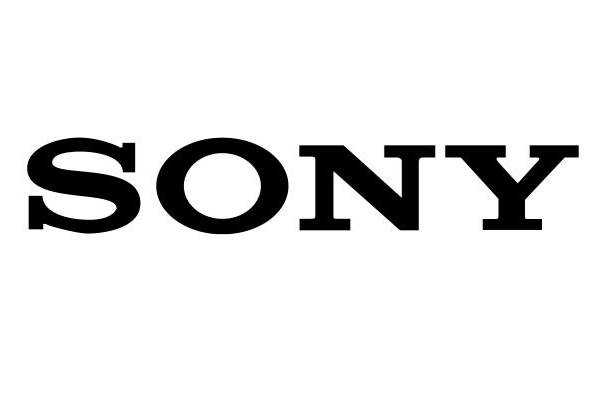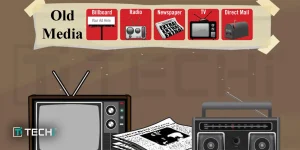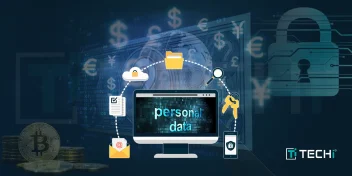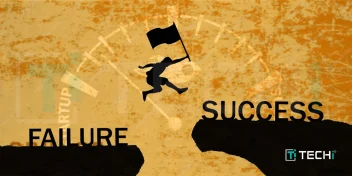Sony was, at a time, the most well-known name in consumer electronics, but the company has lost its mojo. It has been relegated to the middle of the pack while a company by the name of Apple shines brighter than ever. But does Sony have a plan to regain its former glory?
I’m not going to claim to know what that plan is, but I believe they do have a plan that the intend on executing in the next few years to put the company back on the map in innovation. If I was the CEO of Sony, these four steps would be the key to regaining our former glory. Sony does have the power and resources to accomplish these goals. But the question is whether or not they will be able to execute them.
But let’s be optimistic about Sony for a moment. What would they need to do to regain their image as the best?
Step 1: Mimic Apple
Interestingly enough, the first step is tried and true for anyone learning to do something well: learn from the best. Apple is currently raking in $60 billion in revenue last year, but Sony pulled in an impressive $77 billion in revenue during the same time. And while Apple is, quite clearly, doing something right, Sony stands tall on its own. But numbers can be deceiving. Apple has everything going their way, and it is only a matter of time before Sony feels the hurt.
But if Sony takes a few pages from Apple’s playbook, we could be telling a different story in the future.

First, Sony needs to create a distribution platform similar to Apple’s. Everyone wants to be a part of Apple’s iTunes Marketplace and App Store, from Hollywood movie studios to third-party developers, but Sony wants to be in that position. When you generate interest from consumers, developers, and creators of content, you essentially become one of the most powerful companies in the tech world, which happens to be Apple. But if Sony could put together a superior service than the iTunes Marketplace (they could start by actually building a better iTunes application, which really does blow), it could be a promising start.
Next, Sony should rethink its user interface and software platforms. Currently, Sony has an impressive UI that stemmed from the development of the PSX — the XrossMediaBar user interface. But I’m not sure if it is optimal for touch-based input, which is the future. If Sony wants to compete with Apple, consumers need an interface that can present more information and give easier access to that information than their current UI.
Then, Sony should develop more first-party applications for their platforms. These apps would need to do useful things that will help consumers understand the value that Sony offers — these applications must be unique and memorable. It’s no mistake that some of the most-used applications on a platform like Android, for example, are created by Google. If Sony creates a platform and creates high-quality applications for it, they will, at the very least, earn the respect of consumers and developers.
Finally, Sony needs to create new kick-ass hardware (more on that in step 2).
Step 2: Consolidate
The second step is to consolidate Sony’s current products and platforms. If Sony reduces its efforts to producing only a handful — here is the “less is more” argument — of smart phones, tablets, and netbooks while combining its content platforms into one unified system, the company would be in a much better position to compete with Apple.
Sony should begin by combining Music Unlimited, Qriosity, PlayStation Store, Reader Store, and any other content platforms that the company has into a unified platform like iTunes (Sony has already combined Music Unlimited and Qriosity, to their credit). Apart from providing developers and content providers a centralized location to deal with and directing consumers to a single platform to make all their purchases from, this would give Sony a single platform from which to base all of their hardware on. This is a very important step, and one that I have also criticized Microsoft about in the past.

(It is interesting to note that Apple is beginning to suffer from this very issue. There are three separate App Stores for the Mac, iPad, and iPhone alone. This segregation of developers and consumers could be causing unnecessary confusion for consumers and developers, which is sure to get worse if Apple continues at this rate. This isn’t that big of a deal right now, but it could become one in the future.)
After getting content platforms sorted out, Sony could then move on to creating a new breed of devices and products to harness it. They would create a flagship device for every consumer product category out there — with the most important being the smartphone. If Sony were to create a flagship mobile device that harnesses the power of a unified content platform, it would put Sony in a much better position to compete with Apple. Televisions, notebooks, netbooks, tablets, and e-readers would follow suit.
If they get this far, even I would be impressed. And then it would be time for Sony to focus on the competition.
Step 3: Cripple Apple
The third step might not be as difficult as it would appear. It starts off relatively simple: Sony would withdraw all of its content from the Apple ecosystem. This means that all of Sony’s artists that are signed to the company’s labels and all of Sony’s film and television content would no longer be available for purchase from within Apple’s iTunes marketplace.
If we entertain the idea that Sony would actually pull its content (and Sony’s COO sounded very confident that this could happen in time), this act alone isn’t what would devastate Apple. It only becomes a powerful statement if the remaining trio of the “Big Four” music labels and the rest of the “Big Six” movie studios stand with Sony. Apple would then have a situation on its hands.
These companies would still provide their content to Apple customers by either forcing Apple to agree to their terms or by providing applications that provide access to the content purchased from Sony’s own service, but if they don’t allow Apple to sell it, consumers would have to flock to Sony to purchase the content, which would put the ball in Sony’s court.
(Keep in mind, however, that this is a best case scenario. And while it wouldn’t be difficult to get the ball rolling on this, it would be difficult to convince other content providers to abandon Apple and to switch to Sony’s content platform instead.)
If Sony pulled it off — and this is an optimistic outlook of things — it could make Sony a far more attractive company to the groups that count: consumers, content providers, and developers.
Step 4: Win Developers’ Interest
Speaking of developers, this is the last step for Sony to reach the pinnacle of tech stardom. Without the support of third-party developers, all of the actions taken by Sony would not matter, because Apple (or Google, Research In Motion, Microsoft, etc.) would still have the most important piece of the pie — the creativity and innovation from the outside world.
This is the primary reason that iOS is so intriguing to consumers. It is the best platform for seeing the best of what the tech industry can create. There is an application for almost anything you could imagine, and the best part is that these applications are with you wherever you go. Without this same enthusiasm by developers, Sony has no chance of dethroning Apple from its position.
And while this is all purely theoretical (I’m not exactly confident in Sony’s ability to pull anything off, especially the things I have listed above), if Sony actually did everything I mentioned above, there is actually a chance that Sony could take down Apple.
Do you think Sony has what it takes to dethrone Apple? Is it too late? Sound off in the comments!







52 User Comments
kindnation
Sony’s revenue by far is their electronics division, of which, televisions are the largest segment with 23%. This should be their focus. They need to return to being the center of the living room, which incidentally was Steve Jobs approach in taking on Sony 10 years ago after Apple brought back the ‘iCEO’.
Sony needs to make their own smart television, without partnering with Google. They need to be the Internet/media center. What they should create is a media distribution system that ties the internet experience.
There’s no reason why Sony couldn’t reinvent the Internet TV, like Apple did the music player (that killed Sony). The iTV should have tools that people are familiar with without having to reinventing the wheel, by providing a familiar browser (Firefox/Chrome), multiprotocol IM client, Media Center (XBMC), Skype, mail client, etc, and providing an intuitive/simplified user interface (Think APPLE), with an intuitive remote/keyboard remote (license Logitech to design this, because Sony doesn’t know how to design a user friendly remote). All Sony devices should communicate in providing video/audio streaming, file/media sharing, etc. That is how you start to create your ecosystem and is able to support the application/content/media developers creating for your system, for a consumer base whose hearts and minds you’ve won over by creating an enjoyable experience.
Trying to beat Apple by trying to restrict the distribution of your own media content is obtuse and short-sited. You win by being innovative and providing the best user experience. That’s what you should have learned from Apple.
John
Well first, the itunes store is not called “Marketplace” This is a Microsoft reference picked up for use by Android. It’s simply the “Itunes Store” Also, there is one Itunes store not three as you stated, mac apps, iphone and ipad. Yes, the Mac App store is separate since the apps runs on Mac OSX computers and apps for iphone and ipad run on IOS. When you access the store from an ipad, it will feature apps made more for the ipad then apps that are iphone only. In all, everything is part of and billed by Itunes store, including the Mac App Store. Apple centralized everything in Itunes.
For SONY, they never learned a lesson from their mistakes and they continue to make. I have friends that work for Sony and still state why the company is a mess. Its too big in its decision making. It has too many “silos” that compete against each other. Owning a movie studio and music company does not help Sony advance technology. The other studios and music company do not trust Sony as a competitor and a supplier of technology.
Remember the minidisc. I have this somewhere. I loved this device. The biggest problem for Sony was the software. If you had 10 gigs of music, the minidisc software will copy, encrypt, and hide the music in areas that are unknown to you. Your music collection and hard drive space has now dobled to 20 gigs. Back then, we did not have 100, 200, or 500 gig hard drives. Plus it was still cheap to just but the Cd and pop that in then rip, format and load to a glorified cassette tape.
I agree, the best they could do is mimic as a start.
cak
Sony used to care so much about hardware that they refused to sell color tvs until they could make a better one that everyone else, and came up with the trinitron. Now, they are just another company selling the same old rubbish as everyone else.
cak
Sony used to be such a great company, putting hardware first, but when they divested into producing content, their products suffered. This was evidence in crippling their minidisc players so it was impossible to get record your own content, and get a digital copy from them. Evidenced when they crippled their cds by putting rootkit on them. Now their laptops are generic rubbish, TVs are no longer special. And they have always lacked in Software development. Sony was great, but they lost it. Apple does not produce content, so will not be in the same position as Sony are.
Интернет,решения и съвети
Very useful article.